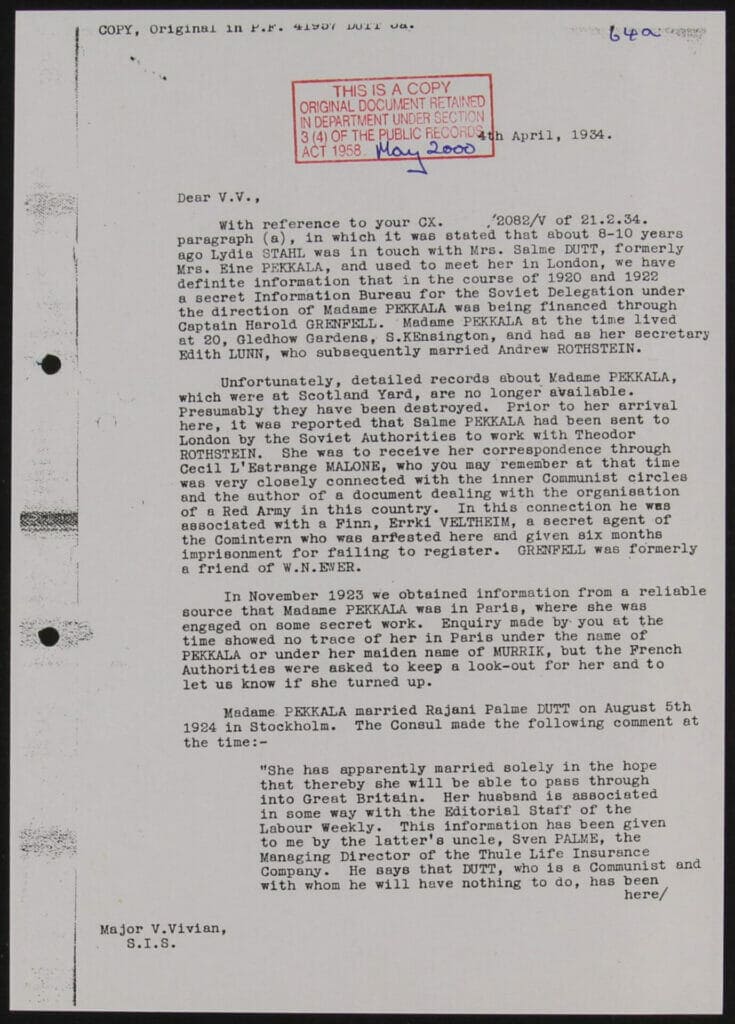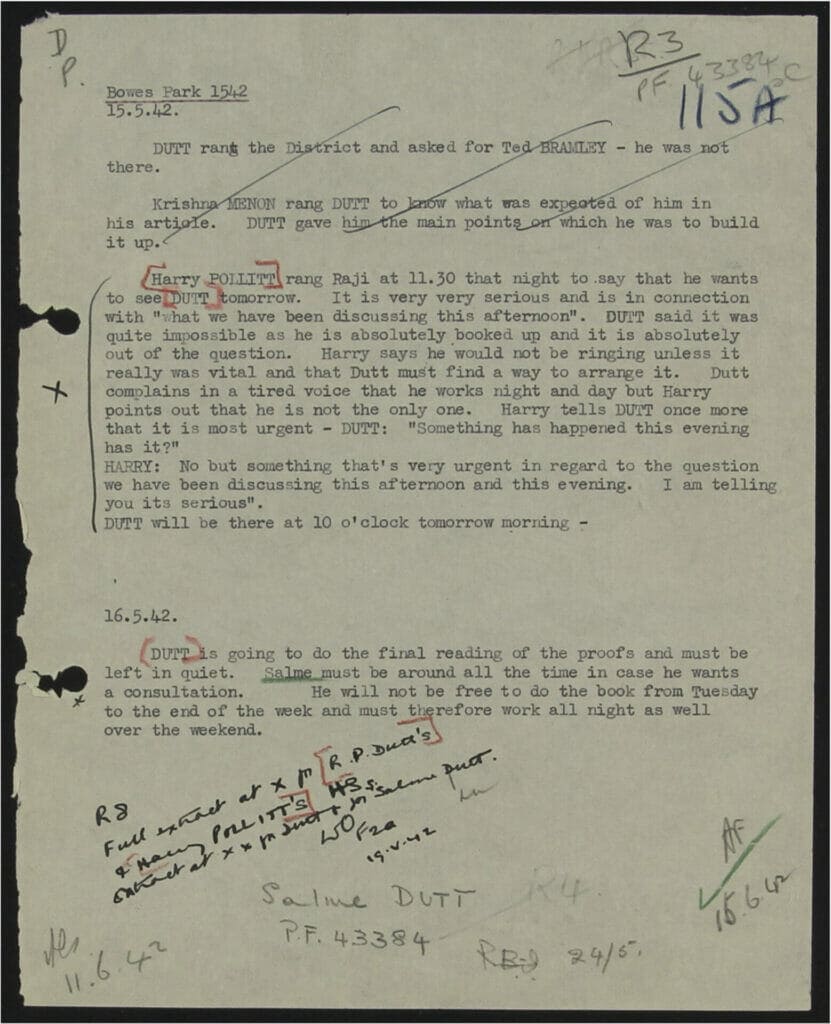│By Jade Burnett, Gale Ambassador at the University of Sheffield│
Throughout this academic year I have been working on an MA dissertation on the marriages of members of the Communist Party of Great Britain (CPGB). In working on this dissertation, I have tried to piece together the personal lives of people who existed largely in the political sphere. While this work is hugely interesting and deeply fulfilling academically, it can also be very tricky, with the writing of personal histories bringing up a range of difficulties surrounding how academics can seek to sensitively piece together the intimate lives of individuals. I hope that this blog post can offer readers some tips and tricks on how to approach writing these histories.
The Trickiness of Personal Histories
The trickiness in writing personal histories is that you are working with a limited number of archival resources, which have been preserved for a number of reasons, to tell a story of which you can never gain a totally complete picture. In the case of my research, I have been able to access several diaries, letters, photographs and security service files, which, while very valuable and informative, can never recreate a full picture of what went on in the private world of two individuals.
In some cases, you may only be able to access certain sources which do not fully capture an event or person, or may find that the sources do not cover the topics that you are interested in. For example, in my research on Rajani Palme Dutt and his wife Salme Murrik, I have found that most surviving sources have been from Dutt’s perspective. As such, there is a risk that I may write a history which portrays the marriage from the view of Dutt without considering Murrik’s side and as such is an incomplete story.
Similarly, there is a risk that certain sources are heavily biased and do not give an accurate perspective of the true events. For example, in my research I have used a large amount of security service files on suspected communists, which, whilst being very useful for the way they can offer insider information, were also collected and analysed by people professionally opposed to these individuals. As such, it is important to look at these files with a very critical eye, understanding how they have been compiled to tell a particular story.
However, whilst there are significant difficulties in producing personal histories, I believe that there are a number of tips and tricks which can be used to simplify and assist in the research process.

How to Write Personal Histories
• Read Existing Biographies to Understand How Sources Fit into the Life of Your Subject
The most important thing when writing personal histories is to ensure that you are writing and researching in a way which allows you to tell a story and provide an analysis which is as accurate and sensitive as possible. One way in which you can do this, is to ensure that your research is grounded in the existing historiography. Reading already existing biographies of those who you are researching is a good way to inform yourself on the key events and people in the lives of your subjects. Then, once you have a timeline of their lives, you can research individuals through their personal archives, or through other sources, with an understanding of where the documents you are looking at fit into their lives.
For example, by reading John Callaghan’s Rajani Palme Dutt: A Study in British Stalinism, I was able to get a basic understanding of the timeline of Dutt’s life, and as such was able to better understand how the letters and security service documents that I was looking at corresponded with events and people in Dutt’s life. From here you have the scope and room to disagree with, or fill gaps in, the historiography where you see fit, confident in the knowledge that your research is accurate.
• Use a Wide Range of Sources to Counterbalance Bias
Another way in which you can ensure you’re writing sensitive and accurate personal histories is to ensure that you are utilising a wide range of sources in your research. All sources have their benefits and their biases and in expanding the number of sources you use, you can widen the scope of your research and counterbalance some of the issues.
For example, I found in my research that there was a vast difference in what could be offered by different types of sources. Security service files, such as those displayed in this blog post, offered an outsider’s perspective, using wiretapping and surveillance as a way of entering the private worlds of many individuals. However, at the same time they offered a very negative perspective, being produced by people who were disposed to have an unsympathetic view of communists. Furthermore, we must account for the potential changes in behaviour of those who knew they were being surveyed and wanted to keep their lives private.
Letters were also a helpful source and were very useful for disproving or offering a counter perspective to some of the more negative opinions of the security service and for providing much more personal perspectives. However, at times letters can be vague, difficult to decipher, and easily taken out of context. As such, oral histories are a useful tool in getting a far more direct perspective on an event or experience, because of the way they present the direct perspectives of those involved (though this too, is not guaranteed to be accurate!). Your choice of sources is important to think about when conducting research into personal lives.

A Rewarding and Engaging Area of Historical Research
While the writing of personal histories can be difficult, it is also very rewarding and engaging. By following these guidelines and tips I believe that you can find ways to research and write effective, accurate and sensitive histories of your subjects.
If you enjoyed reading about writing personal histories, and the individual narratives of those involved in political movements, try:
- Beyond Notting Hill Carnival: Re-visiting the life of Claudia Jones
- Pride and Protest: LGBT+ Disability Activism in the US, 1985-1995
- Grassroots activism in amateur publications written by women, African Americans and the LGBT+ community
- Franco Stevens and the History of Curve Magazine
- Putting Rugby Icon Gareth Thomas’ Story in Context with Gale Primary Sources
- Using Archives Unbound to Explore the Agency of the Oppressed
To learn more about the sources included in Gale’s Political Extremism and Radicalism series, check out:
- The Historical Context Behind Projections of the ‘Dangerous Drag Queen’ by the Far Right
- How to Make Use of British Security Service Documents
- Using Primary Sources to Study Gun Control
Blog post cover image citation: KV 2/513: The Security Service: Personal (PF Series) Files. Communists and Suspected Communists, Including Russian and Communist Sympathisers. May 28, 1920-August 9, 1960. … The National Archives (Kew, United Kingdom). Political Extremism and Radicalism, https://link.gale.com/apps/doc/CDASMF057371010/PLEX?u=webdemo&sid=bookmark-PLEX&xid=596dea3e&pg=1

